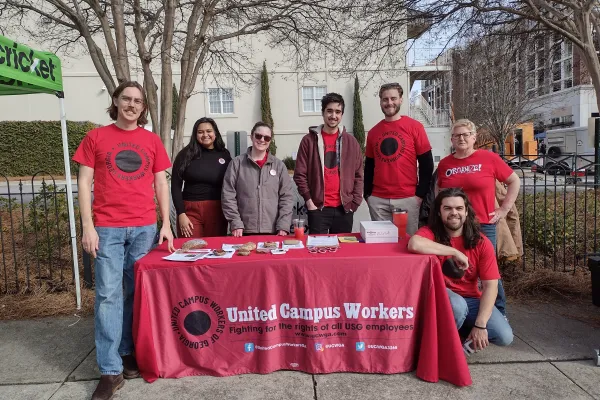UCWGA-UNG Statement on Spring 2021 In-Person Instruction
UCWGA-UNG supports UCWGA’s “Three Simple Demands of the Board of Regents.” Like every member of the UNG community, we are pleased that last semester’s COVID-19 case count was not higher. However, the low case count was likely impacted by: 1) the pandemic being less intense than the current level in the state of Georgia, and 2) the large volume of online and Hybrid Touchstone courses that greatly reduced campus density. Neither of these conditions will be present with the Spring 2021 term.
The Georgia Department of Public Health (GPH) considers a high transmission county to have in excess of 100 cases per 100,000 population over a 14-day period. Based on the County Indicator Reports from GPH, the week before the Spring 2021 term begins Hall County has a case count of 1,136 per 100,000 population. Oconee County has a case count of 1,131 per 100,000 population. Lumpkin County has a case count of 986 per 100,000 population. Forsyth County has a case rate of 671 per 100,000 population. Fannin County has a case count of 462 per 100,000 population. Additionally, GPH notes a positive PCR rate in excess of ten percent over a 14-day period as the second criteria for a high transmission county. The 14-day average positivity rate in Hall County is 24.5%, Oconee County has a positivity rate of 24.8%, Lumpkin County has a positivity rate of 27.3%, Forsyth has a positivity rate 19.9%,and Fannin County has a positivity rate of 15.3%. Every county UNG operates in exceeds the red line for high transmission established by GPH.
The one thing that every member of the UNG community can agree on is this: we want things to get back to normal. However, we do not want to rush into the classroom in the waning months of the pandemic when North Georgia has infection and positivity rates that meet or exceed some of the highest state averages in the nation. Simply because a faculty member does not have a health waiver, and wears a mask, does not guarantee that they will be able to avoid the impact of COVID-19. The last thing anyone wants to do is risk the health of a student, faculty member, or staff member needlessly. We request that the administration work with the Faculty Senate and appropriate unions to determine thresholds identifying when the university should be moved temporarily online based on real-world public health data.
* While county data will change, ideally decline, the reports below served as the data source at the time of writing: https://countyindicatororeport.s3.amazonaws.com/county_indicator_report_20210104.html#introduction
UCWGA Endorses the CWA Executive Board's Statement on the War in Gaza
GGC Faculty Vote No Confidence in President Jann Joseph and Provost George Low


